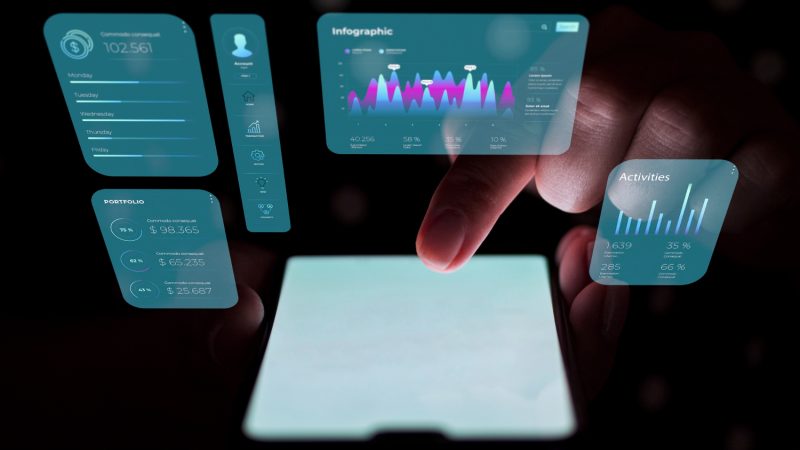9 Tips Customer Engagement Metrics Every CX Expert Should Use

There’s an 80% increase in revenue for businesses that focus on improving the customer experience (CX). In fact, 73% of customers agree the CX helps drive their buying decisions. Another 86% say they’re willing to pay more for better experiences.
Businesses that prioritize CX have a revenue increase of 4 to 8% higher than competitors, too.
Not sure how to start improving the customer experience? Here are nine customer engagement metrics you need to start tracking. Tracking these metrics can help you make more informed decisions when making changes.
Then, you can provide users with the best possible customer experience.
Give your website and business the boost they need. Get started by tracking these nine metrics today.
-
Customer Satisfaction Score
Almost 80% of marketers want to prioritize improving customer retention and satisfaction. Start tracking your customer satisfaction score (CSAT). The CSAT will determine how pleased customers are with a product or service.
You can measure the CSAT by using questions from a customer feedback survey.
In some ways, the CSAT is similar to the net promoter score (NPS). The NPS measures loyalty, though. CSAT, as the name suggests, measures satisfaction.
When developing a customer survey, you can ask, “How would you rate your overall satisfaction with our service?” Most companies create a scale:
- Very Unsatisfied
- Unsatisfied
- Neutral
- Satisfied
- Very Satisfied
You can also ask customers to go into more detail about their service.
To calculate your average, look at the number of satisfied and very satisfied customers. Then, divide that total by how many responses you received.
Multiply that number by 100 to get a percentage.
-
Net Promoter Score
Your Net Promoter Score (NPS) can tell you how likely a customer would recommend a product to their friends. A strong NPS could indicate a strong word-of-mouth marketing strategy. A product recommendation could help you reach new customers.
It could also indicate brand loyalty with your existing customers.
About 73% of people love a brand because of its great customer service.
Loyalty is sometimes worth 10 times as much as a single purchase, too. Meanwhile, 60% of consumers prefer to purchase from familiar brands.
A 2% increase in customer retention can lower costs by as much as 10% as well.
Improving your brand relationships can boost retention rates, improving your ROI.
If you want to grow your business, you need a strong NS score. You can use it as a benchmark to see if you’re improving over time.
You can calculate this metric as you engage consumers using in-app surveys.
NPS equals the percentage of people eager to promote your business (promoters) minus those who aren’t (detractors).
If the score is low, ask follow-up questions. Generating feedback can help you make informed changes to your customer service.
-
Churn Rate
Churn rate is a user engagement metric. It’s the percentage of clients who cut ties from your brand during a given time period. The lower your churn rate, the more customers you retain.
A lower churn rate could indicate a strong customer experience. It could also indicate your marketing efforts are excelling.
Otherwise, you need to determine why, where, and when your customers disappear.
You can calculate your churn rate by subtracting the number of clients at the end of a cycle from the initial number of clients. Then, divide that by the number of clients at the beginning of the time period. Multiply by 100% to get your total.
The lower the churn rate, the higher the retention rate. This indicates satisfactory customer engagement.
-
Customer Lifetime Value
The customer lifetime value (CTLV) measures the amount of revenue you can expect from a client during the span of your relationship. The longer a client continues purchasing from your business, the higher their CLTV.
Remember, retaining long-term customers can improve your ROI.
To calculate CLTV, you need to first determine the lifetime value. LTV equals the average purchase value multiplied by the number of transactions. Then, multiply that total by the retention time period.
To calculate CLTV, multiply the LTV by the profit margin.
The longer a customer stays around, the more money you can make.
-
Visit Frequency
Don’t forget to consider your website analytics when calculating customer engagement metrics, too. For example, how often does a single customer visit your website? Their visit frequency could indicate repeat engagement.
Tracking visit frequency can help you gain insights into potential behavior patterns.
-
Session Time
You can also use customer engagement metrics to determine if you’re engaging visitors on your website. Consider the visitor’s session time, or how long they’re remaining on your site during a given session.
Once you determine how long they stick around, use a heatmap tool to study their behavior.
Where are they clicking on a given page? Where do they linger on a page? Do they scroll all the way down, or stay above the fold?
Gathering these analytics can help you make informed design changes. You can improve the customer experience and boost conversions. You can use this ultimate guide on heatmaps to learn more.
-
Week 1 Customer Engagement
Week 1 user engagement determines how well the user experience hooks a given user. You can learn about how intuitive your onboarding is. You could discover if new users are excited about your product, too.
If users don’t adopt your product within the first week of creating an account, you might struggle to draw them back.
-
Daily Active Users vs Monthly Active Users
Daily active users (DAU) is a vanity metric. You can calculate how many unique clients use your product or service within a given time period.
Monthly active users (MAU) refers to consumers who are engaged within a monthly period.
You can compare the DAU and MAU to determine if there’s a gap.
-
Bounce Rate
A high bounce rate indicates people are visiting your website and leaving without clicking around. There’s likely an issue with the user experience if your bounce rate is too high.
You can use a heatmap to make changes to your website to improve the online experience.
Improving CX: 9 Customer Engagement Metrics You Need to Track
Tracking these customer engagement metrics can help you make informed decisions regarding the customer experience. You can retain long-time, loyal customers. Your ROI could improve as a result.
Start tracking these metrics to improve your marketing strategy today.
Searching for more tips and tricks? We have exactly what you’re looking for.
Explore our latest guides today to get started.






